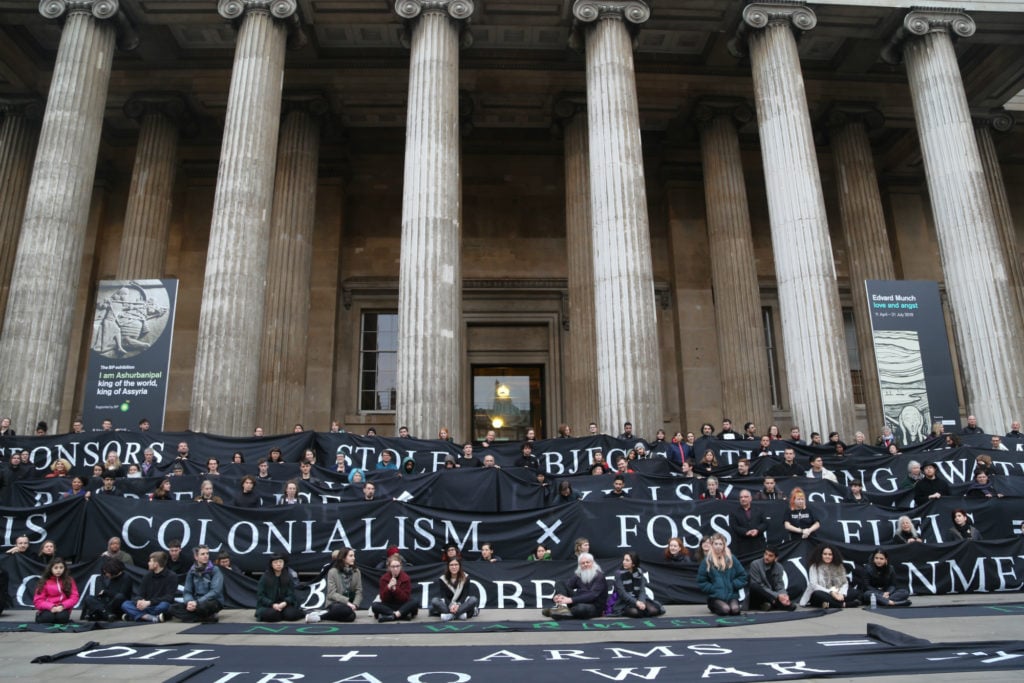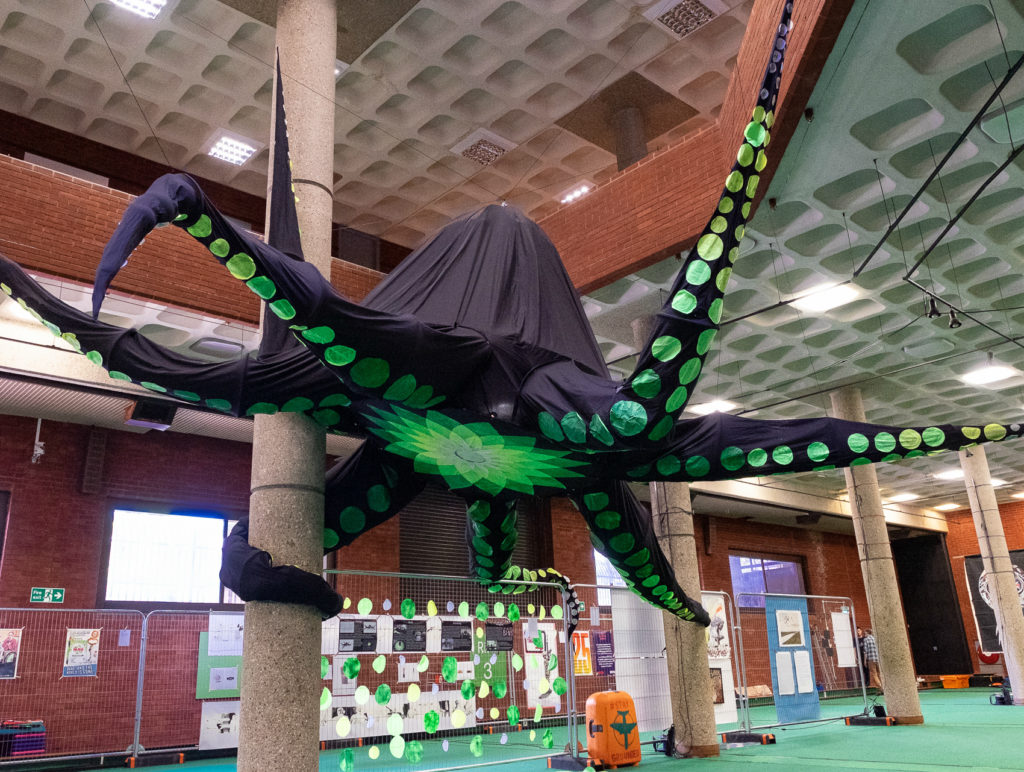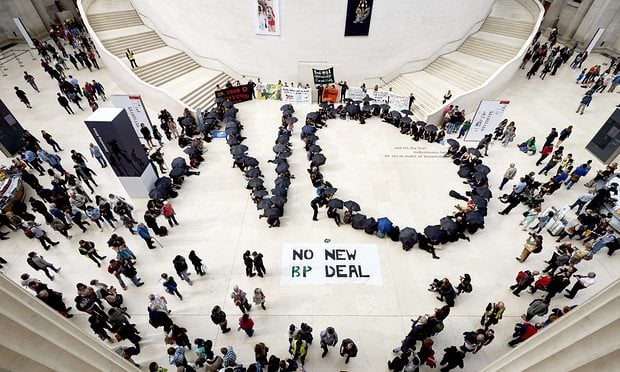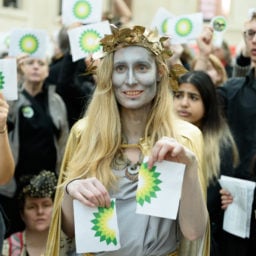In an apparent capitulation to vocal environmental and climate change activists, the British Museum is reportedly ending its 27-year partnership with BP, formerly known as British Petroleum, at the end of the year.
The museum has not officially confirmed the end of their arrangement with the fossil fuel company, but BP’s last contract with the museum ended in February after five years. Disclosures obtained by lawyers for the activist group Culture Unstained via freedom of information requests show that “certain terms” of the deal mean that the museum is allowing BP to keep its “supporter benefits” through December.
“BP is a valued long term supporter of the museum and our current partnership runs until this year,” a British Museum spokesperson told Artnet News in an email. The last exhibition sponsored by the company, “Hieroglyphs: Unlocking Ancient Egypt,” closed in February.
Nevertheless, this is a “massive victory,” Culture Unstained co-director Chris Garrard told the Guardian, which first reported the news. “If it is serious about responding to the climate crisis, the museum must now confirm that there will be no future relationships with fossil fuel producers, take down BP’s name from its lecture theatre and roundly reject the climate-wrecking business it represents.”

Climate change activists protest at the British Museum. Photo: Diana More, courtesy of BP or not BP?
In December, the British Museum announced ambitions to become a net carbon zero museum, aided by its £1 billion ($1.24 billion) “Rosetta Project” to retrofit its 170-year-old building. At the annual trustees dinner, chair George Osbourne proclaimed that the institution would “no longer [be] a destination for climate protest but instead an example of climate solution.”
For decades, BP was deeply embedded in the British art world thanks to its philanthropic giving to institutions such as the Tate and the National Portrait Gallery, both in London.
But over the past few years, such partnerships have sparked controversy for museums, with activist groups such as BP or not BP?, and Greenpeace staging disruptive protests calling on institutions not to accept funds from the company due to the negative environmental impact of big oil.
Among the more notable events at the British Museum were party-crashers dressed as Greek gods who poured oil on themselves at the 2019 opening of an exhibition about the ancient city of Troy, and camping out in front of the exhibition in a Trojan Horse.

Star of “From Nope to Hope, part two,” the anti-BP octopus, was smuggled into the British Museum. Photo: Ron Fassbender
Slowly but surely, the nation’s museums began to bow to pressure to break from BP. The Tate agreed to stop taking donations from BP in 2016, ending a 26-year-old arrangement, and the National Galleries of Scotland announced that it would stop hosting the BP Portrait Exhibition in 2019, in response to a protest letter from 80 leading artists. The National Portrait Gallery, which organizes the show, finally agreed to drop BP as its sponsor in 2022, after more than 30 years.
But even as other institutions such as the Scottish Ballet and the London Royal Opera House extricated themselves from relationship with BP—and one of its trustees resigned in protest—the British Museum’s ties to the company have persisted. In 2019, chair of trustees Richard Lambert said that accepting private funding from companies like BP was a financial necessity—without mounting an ethical defense of working with a fossil fuel company.
Now, in the wake of a slew of even more dramatic climate protests that saw activists glue themselves to the frames of artworks and throw food stuffs at paintings covered with glass, it appears the museum has quietly changed tracks. That means that the nation’s only major museum that still counts BP as a donor is the London Science Museum’s education academy, according to the Art Newspaper.











